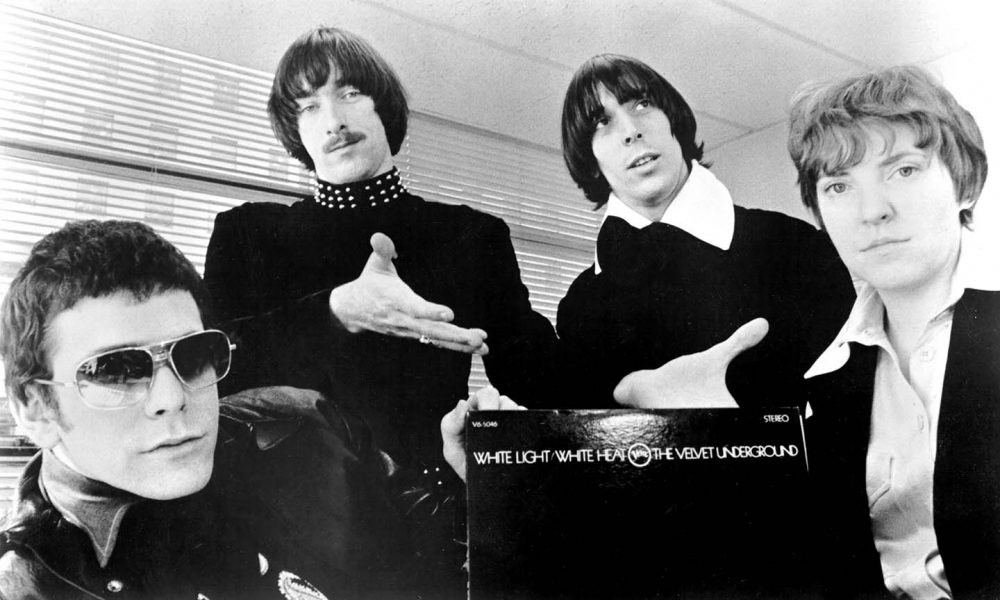The Velvet Underground’s Ballads: The Stories Behind Their Softer Side
How the band created some of the most beautiful songs of the 60s, in between all the bad vibes and valentines to vice.

There was nothing warm and fuzzy about The Velvet Underground. When the airwaves were full of paeans to peace, love, and San Francisco sunshine, this transgressive troop was lurking around the gritty streets of the Lower East Side and haunting Andy Warhol’s factory in Hell’s Kitchen, digging the decadence. Their songs about S&M, heroin addiction, and racial tension made the band the poison apple at Snow White’s hippie happening. So how did The Velvet Underground manage to create some of the most beautiful ballads of the 60s in between all the bad vibes and valentines to vice? Let’s dig in.
Listen to The Velvet Underground’s ballads on Apple Music and Spotify.
Sunday Morning
Exhibit A is the opening track on their 1967 debut album. But it was actually the last thing recorded for the record. For all of producer Tom Wilson’s considerable avant-garde cred, the business-minded side of his brain told him the Velvets would need a radio song, so he pushed Lou Reed’s deceptively pretty ode to early-morning paranoia to the fore. It was originally written for Nico’s stern baritone, but Reed sang it instead, lending it a more laid-back feel, while John Cale’s celeste, piano, and viola overdubs made it the closest thing to chamber pop the band would ever render.
Femme Fatale
With Andy Warhol as manager, the Velvets got to know the wild cast of characters who made up the art entrepreneur’s offbeat retinue. Some of them inevitably inspired Lou Reed’s songwriting, most famously Candy Darling and Joe Dallesandro in “Walk on the Wild Side.” Edie Sedgwick, however, was Warhol’s “It” Girl, who appeared in a long string of his films. Her beauty went hand in hand with tragedy. Drug addiction would take her life at age 28 in 1971. When Reed saluted her with “Femme Fatale,” Sedgwick was still riding high. The lyrics attribute an almost predatory quality to Sedgwick, but they’re offset by the gentle, bossa nova-like sway of the guitars and the bright harmony of the call-and-response backing vocals. Nico brings just the right touch of bittersweet to a tune that could just as easily have been written about her.
I’ll Be Your Mirror
This one actually was inspired by Nico, who gave it one of the most poignant vocal performances she ever recorded. She had allegedly uttered the title phrase to Reed in conversation and he took it from there. The prettiness of the other Velvet Underground ballads is contrasted by a soupcon of sadness, bitchiness, or some type of tension, but “I’ll Be Your Mirror” is Reed’s unsullied statement of sweetness, all about one person truly understanding and accepting another with all their faults. It goes by quickly, barely lasting more than two minutes, but it’s enough to offer a peek at Reed’s seldom-seen soft underbelly.
Candy Says
Before Reed put Candy Darling in “Walk on the Wild Side,” he devoted this heart-rending tune to Warhol’s transgender actress. In the 60s, writing a compassionate portrait of someone struggling with gender identity was impressive enough. Making it one of the most moving moments ever committed to tape is a whole other thing. Of course, the song has a wider appeal, with a message that can resonate for anyone who’s ever felt at odds with themselves. Reed assigned lead vocal duties to the new guy, bassist Doug Yule, whose place in history is assured by these four fateful minutes. On March 6, 2013, just months before his death, Reed sang “Candy Says” at his final public performance, appropriately aided by another transgender artist, Anohni. Coming from an ailing, fragile Reed, lines like “I’ve come to hate my body and all that it requires in this world” lent the song another layer of meaning.
Pale Blue Eyes
This gorgeous gut-punch of a tune is a prime example of Reed’s gift for subversion. Within the framework of what’s ostensibly a straightforward love song, he drops some of his most potent, metaphysical poetry and throws in a dash of adultery for good measure. Reed reportedly wrote the song about Shelley Albin, his girlfriend at Syracuse University, who was allegedly married at the time of its composition. To write a dragon-slaying couplet like “If I could make the world as pure and strange as what I see/I’d put you in the mirror I put in front of me” is to grasp the brass ring of artistic achievement. To drop into a tender love ballad and make it work, that’s just genius territory. In his lyric book, Between Thought and Expression, Reed added the following footnote to the song: “I wrote this for someone I missed very much. Her eyes were hazel.”
Listen to The Velvet Underground’s ballads on Apple Music and Spotify.













David Matejka
May 5, 2024 at 2:09 am
I think the author was being a little tough on Nico. Implying that the song femme fatale could have been written for her kind of detracts from her talent and personality. From everything I’ve read and seen she didn’t se need the False ego boost hinted at in the song.